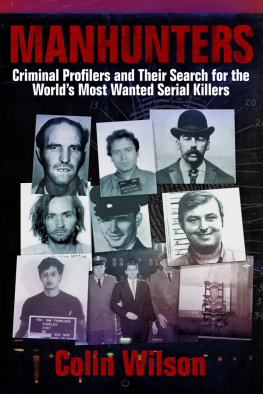About the Book
In the 1980s, American law enforcement agencies investigating the rising number of motiveless murders stumbled upon a worrying possibility what if all these crimes were being committed not by many, but by a relatively small number of people? One killer, multiple victims. The serial killer.
As the number of serial killers worldwide has risen steadily from the emergence of Jack the Ripper in 1888 to Harold Shipman and Ivan Milat, the backpacker killer of the Australian outback the need to understand this disturbing phenomenon is becoming more urgent. But to understand why serial murder is on the rise, we must first understand how the serial killer thinks.
Using privileged access to the worlds first National Centre for the Analysis of Violent Crime, Colin Wilson and Donald Seaman bring you this incisive study of the psychology of serial killers and the motives behind their crimes.
From childhood traumas to issues of frustration, fear and fantasy, discover what turns an ordinary human being into a compulsive killer.
Acknowledgements
The authors wish to place on record their gratitude to the FBI for invaluable help and guidance, freely given at all times, during research for this book in the United States; and especially for permission to visit the National Centre for the Analysis of Violent Crime (NCAVC) at Quantico, Virginia the first such visit by any British publisher. Thanks are due to FBI Director William S. Sessions; also the Assistant Director Milt Ahlerich, and Supervisory Special Agent Stephen Markardt, of the FBI Office of Public Affairs, US Department of Justice, for arranging the visit to Quantico, and later providing research facilities at the FBI J. Edgar Hoover headquarters building in Washington, DC.
We also wish to thank FBI Behavioural Science Unit Chief John Henry Campbell, at Quantico; Supervisory Special Agent Alan E. Burgess, Unit Chief of the Behavioural Science Unit (Investigative Support Wing) and Administrator of the NCAVC, and Supervisory Special Agent John E. Douglas, Criminal Investigative Analysis Programme Manager, for research facilities made available there; VICAP (the Violent Criminal Apprehension Programme) analyst Kenneth A. Hanfland, and social psychologist Dr Roland Reboussin, Ph.D., both of BSIS; Supervisory Special Agent Robert R. (Roy) Hazelwood, Programme Manager/Training Programme, Behavioural Science Unit (Instruction and Research); and Dr David Icove, Ph.D., P.E., Senior Systems Analyst of the NCAVC, for their individual specialist help.
Both authors owe a major debt of gratitude to Candice Skrapec, one of Americas leading experts on serial killers, for her help in establishing contact with the Behavioural Science Unit at Quantico, as well as providing much invaluable information. We also wish to thank the many friends who have provided press cuttings and information on serial killers, particularly June OShea; Stephen Spickard; Denis Stacy; Brian Marriner; Ian Kimber; and the late John Dunning.
In addition we wish to thank Dr David Canter, and Dr Anne Davies, the Principal Scientific Officer of the Metropolitan Police Forensic Science Laboratory.
Finally, the authors are indebted to a number of distinguished journalists, all of whom contributed in their specialist ways to aiding research in England and/or America. Those in Washington, DC, include Ross Mark, the White House correspondent of the Daily Express; bureau chief Ian Brodie and reporter Hugh Davies of the Daily Telegraph; and Ralph Stow, public relations officer for the AMOCO Corporation; and in London James Nicoll, former Foreign Editor of the Daily Express; Derek Stark (Travel Manager) and Frank Robson (former Air Correspondent of the Daily Express); Brian McConnell, QGM, author and veteran crime reporter of the Daily Mirror; Melvin Harris; Peter Johnson, author and Sunday Times journalist; and Ronald Gerelli, former Daily Express photographer.
Bibliography
All His Fathers Sins (The Gallego Case), Ray Biondi and Walt Hecox, Prima Publishing Co., 1988.
Federal Bureau of Investigation: Criminal Investigation.
Analysis/Sexual Homicide , 1985 (Law Enforcement Bulletins, 1980, 1985, 1986).
The Boston Strangler , Gerold Frank, New American Library, 1966.
Before I Kill More (The Heirens Case), Lucy Freeman, Award Books, 1955.
The Trial of Brady and Hindley , edited by Jonathan Goodman, David and Charles, 1973.
Killing for Company (Nilsen), Brian Masters, Jonathan Cape, 1985.
The Nilsen File , Brian McConnel and Douglas Bence, Futura Macdonald, London 1983.
Serial Killers: The Growing Menace , Joel Norris, Doubleday, New York, 1988.
Killer, A Journal of Murder (the Autobiography of Carl Panzram), edited by James E. Gaddis and James O. Long, Macmillans, New York, 1970.
Sexual Homicide, Patterns and Motives , Robert K. Ressler, Ann W. Burgess and John E. Douglas, Lexington Books, 1988.
The Want-Ad Killer (Carignan), Ann Rule, New American Library.
The Stranger Beside Me (Bundy), Ann Rule, W. W. Norton and Co., New York, 1980.
Encyclopaedia of Murder , Colin Wilson and Pat Pitman, Arthur Barker, 1961.
Encyclopaedia of Modern Murder , Colin Wilson and Donald Seaman, Arthur Barker, 1983, and Pan Books, 1989.
Written in Blood, A History of Forensic Detection , Colin Wilson, Equation Books, 1989.
Jack the Ripper: Summing Up and Verdict , Colin Wilson and Robin Odell, Bantam Books, 1987.
Human Nature Stained , Colin Wilson, Paupers Press, 1991.
The Existential Study of Modern Murder , Jeffrey Smalldon, Paupers Press, 1991.
One
A Short History of Sex Crime
SINCE THE EARLY 1980s, American law enforcement agencies have become aware of the emergence of an alarming new phenomenon, the serial killer.
This recognition came about, it seems, through analysis of the steep rise in sex crime and motiveless murder. Ever since the 1960s, multiple murder had been on the increase. The Manson Family had killed at least nine people. Vaughn Greenwood, the Skidrow Slasher of Los Angeles, killed nine homeless vagrants. Necrophile Ed Kemper killed ten, including his grandparents and mother. Paranoid schizophrenic Herb Mullin killed thirteen. Dean Corll, the homosexual murderer of Houston, Texas, killed twenty-seven boys. John Wayne Gacy of Chicago admitted to killing thirty-two boys. Patrick Kearney, the Trash Bag Murderer of Los Angeles, killed twenty-eight men. William Bonin, the Freeway Killer, killed a minimum of twenty-two young men. The Hillside Stranglers, Kenneth Bianchi and Angelo Buono, raped and killed a dozen girls. Ted Bundy killed twenty-three. Randall Woodfield, the I.5 Killer, murdered forty-four. The South American sex killer Pedro Lopez, the Monster of the Andes, admitted to killing three hundred and sixty pre-pubescent girls. In 1983, a derelict named Henry Lee Lucas made headlines in America when he also confessed to killing three hundred and sixty people, mostly women.
All this raised a disturbing possibility: that perhaps a fairly small number of killers were responsible for the rise in sex crime and motiveless murder. (Motiveless murders had risen from 8.5% in 1976 to 22.1% in 1984.) America is a large country, and many killers roam from state to state, moving on before police have a chance to catch up with them. Twenty-two-year-old Steven Judy, who murdered a mother and her three children in 1979, admitted before his execution that he had left a string of murdered women across America. The family of Sherman McCrary three men and two women travelled from Texas to California, robbing drug stores and restaurants, and also abducting waitresses and shop assistants, whose violated bodies were left in lonely places. For this kind of killer, murder becomes a habit and an addiction. Henry Lee Lucas told police: I was bitter at the world... Killing someone is just like walking outdoors. It also became clear that such killers murder out of some fierce inner compulsion, and that after the crime, experience a sense of relief and a cooling-off period. Then, like the craving for a drug, the compulsion builds up again, until it is time to go in search of another victim. It was this type of murderer for whom the police coined the term serial killer. One police officer suggested that there could be as many as thirty-five serial killers at large in America, and that the number could be increasing at the rate of one a month. More recent estimates have been as high as five hundred.



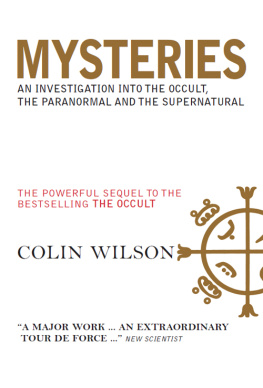

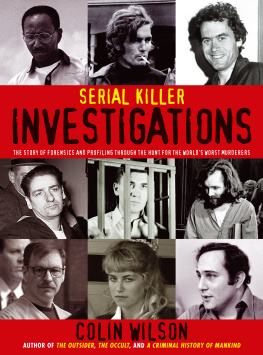
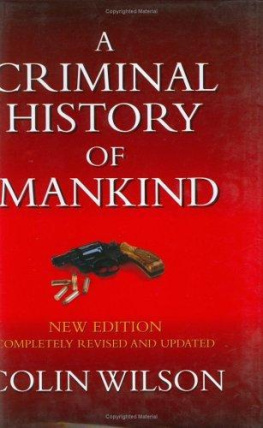


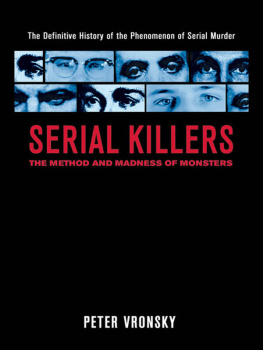
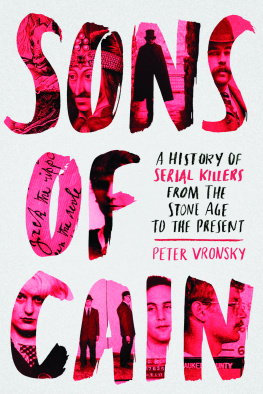


![Charlotte Greig - Evil Serial Killers. In the Minds of Monsters [Fully Illustrated]](/uploads/posts/book/70143/thumbs/charlotte-greig-evil-serial-killers-in-the-minds.jpg)
